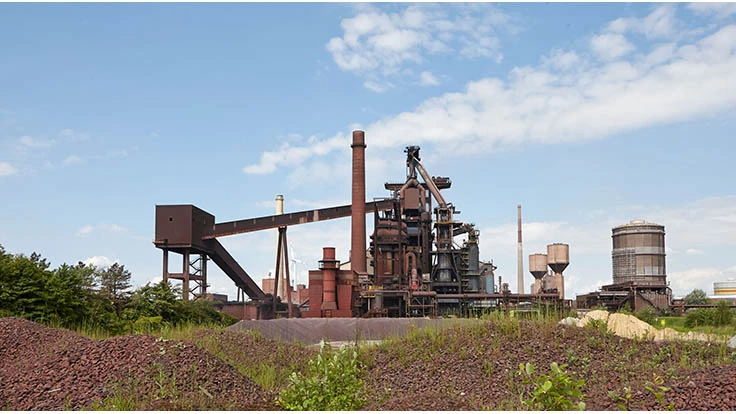
A slag recycling project at the Ostrava, Czech Republic, ArcelorMittal steel mill has been honored by that nation’s Ministry of Industry and Trade through its “Transforming waste into resources” competition. ArcelorMittal’s Jitka Halamová received an award presented at the Czech Senate in Prague in mid-October 2017.
The project, which substituted the primary raw materials for steelmaking with processed recycled slag, ranked fourth in a competition entered by 127 contestants. A panel assembled by the Ministry of Industry and Trade, the Ministry of Education, universities, professional associations and unions judged the entries.
“This award is an affirmation of a project I have been working on for more than two years,” says Halamová, who played a key role in ArcelorMittal’s task to “efficiently recycle waste back into the production process.”
The slag pellets generated as a byproduct typically have a phosphorus content that limits their usefulness in the sintering process, since phosphorus reduces the quality of the resulting pig iron. Traditionally, very little slag is returned to the sintering process, according to ArcelorMittal.
But by mechanically processing the slag pellets, which are smaller than 1/3 inch (8 millimeters) in size, Halamová and her team were able to increase the slag’s iron content from less than 40 percent to between 54 and 57 percent, while keeping the phosphorus content low enough to reuse the enriched slag in the sintering process. The processed slag was thus able to replace iron ore, additives and fuel in the production process.
According to ArcelorMittal, one metric ton of enriched slag can replace slightly more than 1 metric ton of iron ore, about 740 pounds (336 kilograms) of carbonate additives and varying amounts of fuel.
Using slag in this way increases the sustainability of the mill’s operations and saves money compared to extracting and using primary natural resources, says the firm. In 2016 ArcelorMittal Ostrava recycled on average 1,900 metric tons of enriched slag per month and in the process saved a more than $865,000 (€735,000).
“Since we've been using a special technology to sort the slag to end up a with higher iron content and a lower level of phosphorus, we have been able to reuse that slag in our operations in much higher amounts than before,” says Halamová. “Thanks to that, we are able to save iron ore, additives and fuel and, at the same time, we don’t accumulate large amounts of waste on our premises.”
Latest from Recycling Today
- BMW Group, Encory launch 'direct recycling’ of batteries
- Loom Carbon, RTI International partner to scale textile recycling technology
- Goodwill Industries of West Michigan, American Glass Mosaics partner to divert glass from landfill
- CARI forms federal advocacy partnership
- Monthly packaging papers shipments down in November
- STEEL Act aims to enhance trade enforcement to prevent dumping of steel in the US
- San Francisco schools introduce compostable lunch trays
- Aduro graduates from Shell GameChanger program





